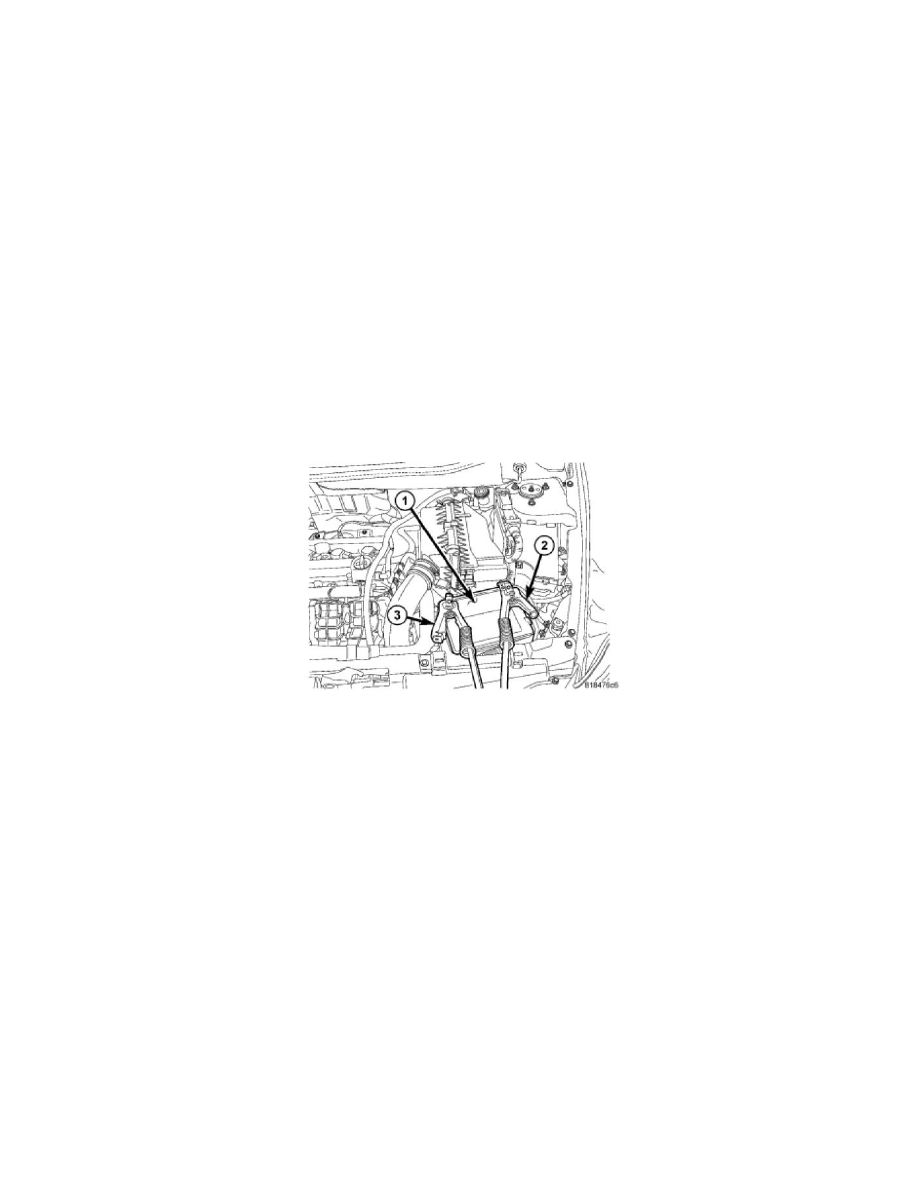Compass 2WD L4-2.4L (2008)

Jump Starting: Service and Repair
STANDARD PROCEDURE - JUMP STARTING
WARNING: Review all safety precautions and warnings in battery/starting/charging sections. Do not jump start a frozen battery, personal
injury can result. Do not jump start when maintenance free battery indicator dot is yellow or bright color. Do not jump start a vehicle when the
battery fluid is below the top of lead plates. Do not allow jumper cable clamps to touch each other when connected to a booster source. Do not
use open flame near battery. Remove metallic jewelry worn on hands or wrists to avoid injury by accidental arcing of battery current. When
using a high output boosting device, do not allow battery voltage to exceed 16 volts. Refer to instructions provided with device being used.
CAUTION: When using another vehicle as a booster, do not allow vehicles to touch. Electrical systems can be damaged on either vehicle.
TO JUMP START A DISABLED VEHICLE:
WARNING: Take care to avoid the radiator cooling fan whenever the hood is raised. It can start anytime the ignition switch is on. You can be
hurt by the fan.
WARNING: Do not attempt to push or tow your vehicle to get it started. Vehicles equipped with an automatic transaxle cannot be started this
way and may be damaged. Unburned fuel could enter the catalytic converter and once the engine has started, ignite and damage the converter
and vehicle. If the vehicle has a discharged battery, booster cables may be used to obtain a start from another vehicle. This type of start can be
dangerous if done improperly, so follow this procedure carefully.
WARNING: Wear eye protection and remove any metal jewelry such as watch bands or bracelets that might make an inadvertent electrical
contact. You could be seriously injured.
1. Raise hood on disabled vehicle and visually inspect engine compartment for:
-
Battery cable clamp condition, clean if necessary.
-
Frozen battery.
-
Yellow or white color test indicator, if equipped.
-
Generator drive belt condition and tension.
-
Fuel fumes or leakage, correct if necessary.
CAUTION: If the cause of starting problem on disabled vehicle is severe, damage to booster vehicle charging system can result.
2. Wear eye protection and remove any metal jewelry such as watch bands or bracelets that might make an inadvertent electrical contact.
3. When boosting from a battery in another vehicle, park that vehicle within booster cable reach but without letting the vehicles touch. Set parking
brake, place automatic transaxle in PARK (manual transaxle in NEUTRAL) and turn ignition to OFF for both vehicles.
4. Turn off the heater, radio and all unnecessary electrical loads.
5. Remove the air intake duct covering the battery, using the two finger screws on the cover.
6. Connect one end of a jumper cable to the positive terminal of the booster battery. Connect the other end of the jumper cable to the positive
terminal (2) of the discharged battery (1).
WARNING: Battery fluid is a corrosive acid solution; do not allow battery fluid to contact eyes, skin or clothing. Don't lean over battery
when attaching clamps or allow the clamps to touch each other. If acid splashes in eyes or on skin, flush the contaminated area
immediately with large quantities of water.
A battery generates hydrogen gas which is flammable and explosive. Keep flame or spark away from the vent holes. Do not use a booster
battery or any other booster source with an output that exceeds 12 volts.
7. Connect the other cable, first to the negative terminal of the booster battery and then to the negative terminal (3) of the discharged battery (1).
Make sure you have a good contact.
8. If the vehicle is equipped with Sentry Key Immobilizer, turn the ignition switch to the ON position for 3 seconds before moving the ignition switch
